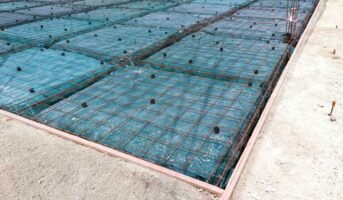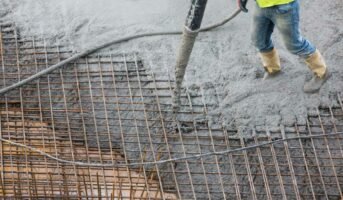French drains are used to tackle unwanted water accumulation around the property. By efficiently redirecting water away from your home’s foundation, they safeguard against potential flooding and water damage. In this article, discover the purpose of French drains and how to successfully install one. Whether you’re a DIY enthusiast or seeking to enhance your property’s drainage, understanding the intricacies of French drains can make a significant difference.
What are French drains?
A French drain is a drainage solution designed to redirect water away from an area, preventing waterlogging and potential damage. It comprises a trench filled with gravel and a perforated pipe that channels water away from the location where it’s not needed. These drains are highly effective in managing excess water, especially around basements, crawlspaces, and landscaped areas.
How to install French drains?
Planning
- Identify the areas prone to water accumulation and choose a location for the drain’s installation.
- Consider factors such as slope, soil type, and the water’s source.
Excavate the trench
- Dig a trench along the chosen path, sloping it slightly to facilitate water flow.
- The trench’s depth and width should be appropriate for accommodating the drain components.
Line the trench with filter fabric
- Line the trench with a layer of geotextile or filter fabric to prevent soil from clogging the gravel.
Create a gravel bedding
- Pour a clean, coarse gravel layer into the trench, forming a bedding for the drain components.
Connect the pipe
- Connect the perforated pipe to the appropriate connectors, ensuring the holes face downward.
Place the pipe in the trench
- Position the connected pipe in the trench, ensuring it lies on the gravel bedding.
Cover with gravel and filter fabric
- Cover the pipe with more gravel, ensuring a uniform layer.
- Place another layer of filter fabric over the gravel to prevent soil infiltration.
Refill with topsoil
- Carefully refill the trench with the excavated soil, pushing it down gently as you proceed.
Maintenance of French drains
- Regularly inspect the drain for clogs, debris, or damage.
- Ensure the outlets are clear and water flows smoothly.
FAQs
Can I install a French drain on my own?
Yes, with proper planning and following guidelines, DIY installation is feasible.
What size should the trench be for a French drain?
The trench should be around 8 to 12 inches wide and 18 to 24 inches deep.
Can I use any type of pipe for a French drain?
It's recommended to use a perforated plastic pipe designed for drainage.
Should the pipe slope in a particular direction?
Yes, the pipe should slope around 1 inch for every 10 feet of length to facilitate water flow.
Can I plant grass or plants over a French drain?
Yes, you can, but ensure the plants have shallow roots and won't obstruct water flow.
How often should I inspect the French drain?
Regular inspections every few months, especially before rainy seasons, are advisable.
Are French drains a permanent solution?
While French drains can be very effective, occasional maintenance may be required to ensure optimal performance.
| Got any questions or point of view on our article? We would love to hear from you. Write to our Editor-in-Chief Jhumur Ghosh at [email protected] |
Housing News Desk is the news desk of leading online real estate portal, Housing.com. Housing News Desk focuses on a variety of topics such as real estate laws, taxes, current news, property trends, home loans, rentals, décor, green homes, home improvement, etc. The main objective of the news desk, is to cover the real estate sector from the perspective of providing information that is useful to the end-user.
Facebook: https://www.facebook.com/housing.com/
Twitter: https://twitter.com/Housing
Email: [email protected]











